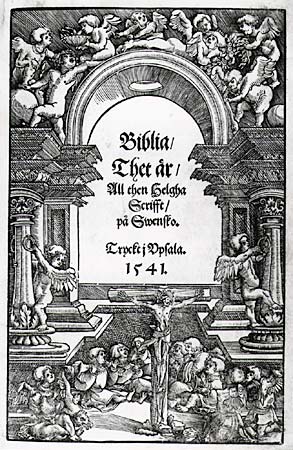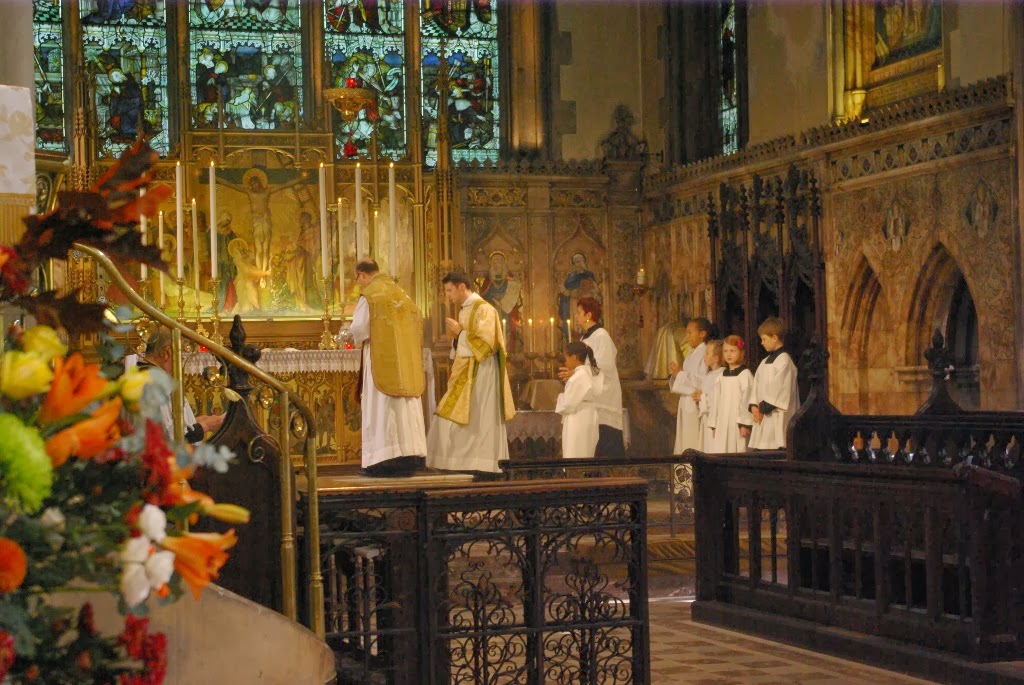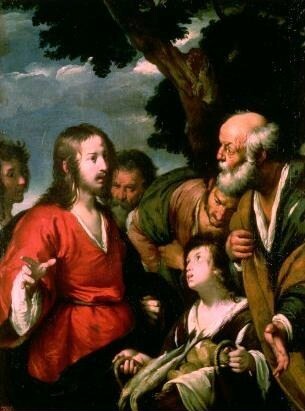|
Laetare Sunday
Laetare Sunday ( Church Latin: ; Classical Latin: ; English: ) is the fourth Sunday in the season of Lent, in the Western Christian liturgical calendar. Traditionally, this Sunday has been a day of celebration within the austere period of Lent. This Sunday gets its name from the first few words () of the traditional Latin entrance verse (Introit) for the Mass of the day. ("Rejoice, O Jerusalem") is Latin from Isaiah 66:10. History The term "Laetare Sunday" is used by most Roman Catholic, Lutheran, and Anglican churches. The Latin is an imperative: "rejoice!" The full Introit reads: Psalm: Rejoice ye with Jerusalem; and be ye glad for her, all ye that delight in her: exult and sing for joy with her, all ye that in sadness mourn for her; that ye may suck, and be satisfied with the breasts of her consolations. ''Psalm'': I was glad when they said unto me, We will go into the house of the Lord. Alternative names This Sunday is currently also known as Mothering Sunday, R ... [...More Info...] [...Related Items...] OR: [Wikipedia] [Google] [Baidu] [Amazon] |
Western Christianity
Western Christianity is one of two subdivisions of Christianity (Eastern Christianity being the other). Western Christianity is composed of the Latin Church and Protestantism, Western Protestantism, together with their offshoots such as the Old Catholic Church, Independent Catholicism and Restorationism. The large majority of the world's 2.3 billion Christians are Western Christians (about 2 billion: 1.2 billion Latin Catholic and 1.17 billion Protestant). One major component, the Latin Church, developed under the bishop of Rome. Out of the Latin Church emerged a wide variety of independent Protestant denominations, including Lutheranism and Anglicanism, starting from the Protestant Reformation in the 16th century, as did Independent Catholicism in the 19th century. Thus, the term "Western Christianity" does not describe a single Communion (Christian), communion or religious denomination but is applied to distinguish all these denominations collectively from Eas ... [...More Info...] [...Related Items...] OR: [Wikipedia] [Google] [Baidu] [Amazon] |
Introit
The Introit () is part of the opening of the liturgical celebration of the Eucharist for many Christian denominations. In its most complete version, it consists of an antiphon, psalm verse and '' Gloria Patri'', which are spoken or sung at the beginning of the celebration. It is part of the '' proper'' of the liturgy: that is, the part that changes over the liturgical year. In the Roman Rite of the Catholic Church it is known as the ''antiphona ad introitum'' (Entrance antiphon), as in the text for each day's Mass, or as the ''cantus ad introitum'' (Entrance chant) as in the General Instruction of the Roman Missal, 47 and the First Roman Ordo (sixth to seventh century).Fortescue, A. (1910)"Introit" ''The Catholic Encyclopedia''. Retrieved 2 May 2009 In pre-1970 editions of the Roman Missal, the word ''Introitus'' was used, distinguished from the normal meaning of the word (entrance) by being capitalized. In Ambrosian chant and Beneventan chant, the counterpart of the Introit is ... [...More Info...] [...Related Items...] OR: [Wikipedia] [Google] [Baidu] [Amazon] |
Revised Common Lectionary
The Revised Common Lectionary (RCL) is a lectionary of readings or pericopes from the Bible for use in Christian worship, making provision for the liturgical year with its pattern of observances of festivals and seasons. It was preceded by the Common Lectionary, assembled in 1983, itself preceded by the COCU Lectionary, published in 1974 by the Consultation on Church Union (COCU). This lectionary was derived from Protestant lectionaries in use, which in turn were based on the 1969 ''Ordo Lectionum Missae'', a three-year lectionary produced by the Catholic Church following the reforms of the Second Vatican Council. Origin The Revised Common Lectionary was the product of a collaboration between the North American Consultation on Common Texts (CCT) and the International English Language Liturgical Consultation (ELLC). After a nine-year trial period, it was publicly released in 1994. The CCT membership includes the United States Conference of Catholic Bishops and the Canadian Con ... [...More Info...] [...Related Items...] OR: [Wikipedia] [Google] [Baidu] [Amazon] |
Feeding The Multitude
In Christianity, feeding the multitude comprises two separate miracles of Jesus, reported in the Gospels, in which Jesus used modest resources to feed thousands of followers who had gathered to see him heal the sick. The first miracle, the "Feeding of the 5,000", is the only miracle—aside from the resurrection—recorded in all four gospels ( Matthew 14:13–21; Mark 6:31–44; Luke 9:12–17; John 6:1–14). The second miracle, the "Feeding of the 4,000", with seven loaves of bread and a few small fish, is reported in Matthew 15:32–39 and Mark 8:1–9 but not in Luke or John. The feeding of the 5,000 The Feeding of the 5,000 is also known as the "miracle of the five loaves and two fish"; the Gospel of John reports that Jesus used five loaves and two fish supplied by a boy to feed a multitude. According to the Gospel of Matthew, when Jesus heard that John the Baptist had been killed, he withdrew by boat privately to a solitary place. Luke specifies that the place was ... [...More Info...] [...Related Items...] OR: [Wikipedia] [Google] [Baidu] [Amazon] |
Vestment
Vestments are Liturgy, liturgical garments and articles associated primarily with the Christianity, Christian religion, especially by Eastern Christianity, Eastern Churches, Catholic Church, Catholics (of all rites), Lutherans, and Anglicans. Many other groups also make use of liturgical garments; among the Calvinism, Reformed (Calvinist) Churches this was a point of Vestments controversy, controversy in the Protestant Reformation and sometimes since, in particular during the Ritualism in the Church of England#Ritualist controversies in the 19th century, ritualist controversies in the Church of England in the 19th century. Origins In the early Christian churches, officers and leaders, like their congregations, wore the normal dress of civil life in the Greco-Roman world, although with an expectation that the clothing should be clean and pure during holy observances. From the 4th century onward, however, modifications began to be made to the form of the garments, and, as secula ... [...More Info...] [...Related Items...] OR: [Wikipedia] [Google] [Baidu] [Amazon] |
Golden Rose
The Golden Rose (, ) is a gold ornament, which popes of the Catholic Church have traditionally blessed annually. It is occasionally conferred as a token of reverence or affection. Recipients have included churches and sanctuaries, royalty, military figures, and governments. Significance and symbolism The rose is blessed on the fourth Sunday of Lent, Lætare Sunday (also known as ''Rose Sunday''), when rose-coloured vestments and draperies substitute for the penitential purple, symbolizing hope and joy in the midst of Lenten solemnity. Throughout most of Lent, Catholics pray, fast, perform penance, and meditate upon the malice of sin and its negative effects; but Rose Sunday is an opportunity to look beyond Christ's death at Calvary and forward to His joyous Resurrection. The beautiful Golden Rose symbolizes the Risen Christ of glorious majesty. (The Messiah is hailed "the flower of the field and the lily of the valleys" in the Bible.) The rose's fragrance, according to Pop ... [...More Info...] [...Related Items...] OR: [Wikipedia] [Google] [Baidu] [Amazon] |
Rosalia (festival)
In the Roman Empire, Rosalia or Rosaria was a festival of roses celebrated on various dates, primarily in May, but scattered through mid-July. The observance is sometimes called a ''rosatio'' ("rose-adornment") or the ''dies rosationis'', "day of rose-adornment," and could be celebrated also with violets ''(violatio'', an adorning with violets, also ''dies violae'' or ''dies violationis'', "day of the "). As a commemoration of the dead, the ''rosatio'' developed from the custom of placing flowers at burial sites. It was among the extensive private religious practices by means of which the Romans cared for their dead, reflecting the value placed on tradition ''(mos maiorum'', "the way of the ancestors"), family lineage, and memorials ranging from simple inscriptions to grand public works. Several dates on the Roman calendar were set aside as public holidays or memorial days devoted to the dead. As a religious expression, a ''rosatio'' might also be offered to the cult statue o ... [...More Info...] [...Related Items...] OR: [Wikipedia] [Google] [Baidu] [Amazon] |
Refreshment Sunday
The Refreshment Sundays or Rose Sundays are Sundays within the two major fasts observed in Western Christianity Western Christianity is one of two subdivisions of Christianity (Eastern Christianity being the other). Western Christianity is composed of the Latin Church and Protestantism, Western Protestantism, together with their offshoots such as the O ..., Lent and Advent. On these days, the fast was allowed to be relaxed, hence the name "Refreshment Sunday". Correspondingly, the liturgical colours of the season are replaced with rose, hence the name "Rose Sunday". The Refreshment Sundays are: * Laetare Sunday, the fourth Sunday in Lent * Gaudete Sunday, the third Sunday in Advent Of these, the better known is Laetare Sunday, and if reference is made to a single "Refreshment Sunday" or "Rose Sunday" it is usually this Sunday that is meant. It is also called Mid-Lent Sunday, Mothering Sunday, Mother's Day, and Rose Sunday. As noted, on both Refreshment Sundays, t ... [...More Info...] [...Related Items...] OR: [Wikipedia] [Google] [Baidu] [Amazon] |
Mothering Sunday
Mothering Sunday is a day honouring mother churches, the church where one is baptised and becomes "a child of the church", celebrated since the Middle Ages in the United Kingdom, Ireland and some Commonwealth countries on the fourth Sunday in Lent. On Mothering Sunday, Christians have historically visited their mother church—the church in which they received the sacrament of baptism. Constance Adelaide Smith revived its modern observance beginning in 1913 to honour Mother Church, 'mothers of earthly homes', the Virgin Mary (mother of Jesus), and Mother Nature. It gained popularity in response to the originally American Mother's Day. The holiday is often known as "Mother's Day" in the United Kingdom, and has become a secular celebration of mothers and motherhood. Mediaeval origin Mothering Sunday coincides with Laetare Sunday, also called Mid-Lent Sunday or Refreshment Sunday, a day of respite from fasting halfway through the penitential season of Lent. Its association ... [...More Info...] [...Related Items...] OR: [Wikipedia] [Google] [Baidu] [Amazon] |
I Was Glad
'I was glad' () is an English text drawn from selected verses of Psalm 122. It has been used at Westminster Abbey in the Coronation of the British monarch, coronation ceremonies of British monarchs since those of Charles I of England, King Charles I in 1626.Tanner, Lawrence E (1934), ''Westminster School: A History'', Country Life Ltd, London (p. 36) an additional non-biblical text is added to the psalm verses used in the Westminster Abbey ceremonies, i.e. the acclamation "Vivat Rex ... " or "Vivat Regina ... " ("Long live King/Queen ..."). By tradition this acclamation is made by Queen's Scholar, King's or Queen's Scholars of Westminster School as the Sovereign passes through the Quire of Westminster Abbey.Hall. John (2012), ''Queen Elizabeth II and Her Church: Royal Service at Westminster Abbey'', Bloomsbury Publishing, ] (p. 11) "Vivat" pronunciation The acclamation uses a variant of standard Latin pronunciation known as Anglicised Latin. Scholars of Classical Latin would prono ... [...More Info...] [...Related Items...] OR: [Wikipedia] [Google] [Baidu] [Amazon] |
Anglicanism
Anglicanism, also known as Episcopalianism in some countries, is a Western Christianity, Western Christian tradition which developed from the practices, liturgy, and identity of the Church of England following the English Reformation, in the context of the Protestant Reformation in Europe. It is one of the largest branches of Christianity, with around 110 million adherents worldwide . Most are members of national or regional Ecclesiastical province#Anglican Communion, ecclesiastical provinces of the international Anglican Communion, one of the largest Christian bodies in the world, and the world's third-largest Christian communion. When united and uniting churches, united churches in the Anglican Communion and the breakaway Continuing Anglican movement were not counted, there were an estimated 97.4 million Anglicans worldwide in 2020. Adherents of Anglicanism are called ''Anglicans''; they are also called ''Episcopalians'' in some countries. The provinces within the Anglican ... [...More Info...] [...Related Items...] OR: [Wikipedia] [Google] [Baidu] [Amazon] |
Lutheranism
Lutheranism is a major branch of Protestantism that emerged under the work of Martin Luther, the 16th-century German friar and Protestant Reformers, reformer whose efforts to reform the theology and practices of the Catholic Church launched the Reformation in 1517. The Lutheran Churches adhere to the Bible and the Ecumenical Creeds, with Lutheran doctrine being explicated in the Book of Concord. Lutherans hold themselves to be in continuity with the apostolic church and affirm the writings of the Church Fathers and the first four ecumenical councils. The schism between Roman Catholicism and Lutheranism, which was formalized in the Diet of Worms, Edict of Worms of 1521, centered around two points: the proper source of s:Augsburg Confession#Article XXVIII: Of Ecclesiastical Power., authority in the church, often called the formal principle of the Reformation, and the doctrine of s:Augsburg Confession#Article IV: Of Justification., justification, the material principle of Luther ... [...More Info...] [...Related Items...] OR: [Wikipedia] [Google] [Baidu] [Amazon] |







